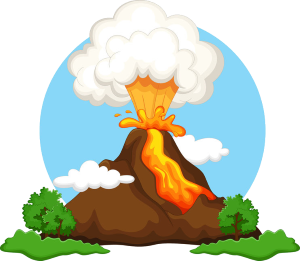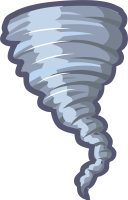





Nature can be dangerous. Disaster can strike at any time. The more you know, the better you can react.
Earthquakes happen when the Earth's surface shakes suddenly. They occur along cracks in the Earth's surface. These cracks are called fault lines. If an earthquake begins, and you are indoors, get under a table or desk. Doing this will protect you from falling objects.
Hurricanes are very large storms that form over warm ocean water. When hurricanes reach land, heavy rains and powerful winds can damage buildings. Usually, hurricanes last for days! You should move to high ground or evacuate the area ahead of time.
Tornadoes are like hurricanes but much smaller. They normally only last a few minutes. Tornadoes normally form during a thunderstorm. At first, they appear as a funnel at the base of a cloud. Wind speed in the most powerful tornadoes can reach as high as 250 miles per hour! If you know a tornado is heading your way, move quickly to an area in the middle of a building. It is important to have as many walls between you and the tornado as possible.

A volcano is a mountain that has an opening at the top. This opening is a vent through which melted rock, also called lava, escapes. Pressure below the surface of the earth causes the lava to spew out. At times this can be quite explosive. The best thing to do during a volcanic eruption is to stay indoors to avoid the ash-filled air.
As you can see, nature can be very violent. Natural disasters are rare, but it is very important to know how to react if one occurs near you.